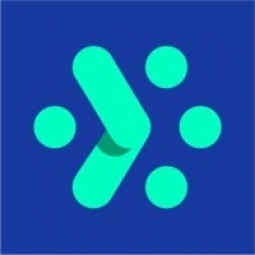Download PDF
IKEA Lays the Foundation for Future Growth by Unlocking Insights Within Its Data
Technology Category
- Platform as a Service (PaaS) - Data Management Platforms
Applicable Industries
- Retail
Applicable Functions
- Business Operation
Services
- Data Science Services
The Challenge
IKEA Austria was facing challenges in consolidating data from various sources, which was crucial for understanding the needs of its customers and preparing for future growth. The company was dealing with multiple data sources and using the services of several agencies, which led to data silos and unavailability of data. Data quality was also a significant issue, with different KPIs and naming conventions used for campaigns on different channels, making reporting on campaign performance extremely difficult. The company was also facing challenges in terms of data accessibility, with global teams at IKEA having to wait for days, even weeks, for the information they needed.
About The Customer
IKEA Austria is part of one of the largest home furnishing chains in the world. It serves customers through seven retail locations, covering an area of almost 200,000m², and a modern website, which grew in visits by 68 percent during 2019. The company is investing a lot of effort in trying to understand the needs of its customers and being able to react ahead of time. It receives an additional layer of intelligence about its customers' needs through the IKEA Family loyalty program.
The Solution
IKEA Austria implemented Adverity, a platform that automated and streamlined its data operations. The solution fit easily into IKEA's existing technology stack, which consisted mostly of Microsoft's products. For data visualization, the company uses Power BI, with data stored in a cloud-based SQL Server database, hosted on Microsoft Azure. Adverity collected and transformed high-quality data and supplied it to their BI solution. The platform also resolved the challenge of an ever-increasing number of data sources and was set up within two weeks. Adverity supports all major platform providers, ensuring flexibility for IKEA Austria.
Operational Impact
Quantitative Benefit
Related Case Studies.

Case Study
Improving Production Line Efficiency with Ethernet Micro RTU Controller
Moxa was asked to provide a connectivity solution for one of the world's leading cosmetics companies. This multinational corporation, with retail presence in 130 countries, 23 global braches, and over 66,000 employees, sought to improve the efficiency of their production process by migrating from manual monitoring to an automatic productivity monitoring system. The production line was being monitored by ABB Real-TPI, a factory information system that offers data collection and analysis to improve plant efficiency. Due to software limitations, the customer needed an OPC server and a corresponding I/O solution to collect data from additional sensor devices for the Real-TPI system. The goal is to enable the factory information system to more thoroughly collect data from every corner of the production line. This will improve its ability to measure Overall Equipment Effectiveness (OEE) and translate into increased production efficiencies. System Requirements • Instant status updates while still consuming minimal bandwidth to relieve strain on limited factory networks • Interoperable with ABB Real-TPI • Small form factor appropriate for deployment where space is scarce • Remote software management and configuration to simplify operations

Case Study
How Sirqul’s IoT Platform is Crafting Carrefour’s New In-Store Experiences
Carrefour Taiwan’s goal is to be completely digital by end of 2018. Out-dated manual methods for analysis and assumptions limited Carrefour’s ability to change the customer experience and were void of real-time decision-making capabilities. Rather than relying solely on sales data, assumptions, and disparate systems, Carrefour Taiwan’s CEO led an initiative to find a connected IoT solution that could give the team the ability to make real-time changes and more informed decisions. Prior to implementing, Carrefour struggled to address their conversion rates and did not have the proper insights into the customer decision-making process nor how to make an immediate impact without losing customer confidence.

Case Study
Digital Retail Security Solutions
Sennco wanted to help its retail customers increase sales and profits by developing an innovative alarm system as opposed to conventional connected alarms that are permanently tethered to display products. These traditional security systems were cumbersome and intrusive to the customer shopping experience. Additionally, they provided no useful data or analytics.

Case Study
Ensures Cold Milk in Your Supermarket
As of 2014, AK-Centralen has over 1,500 Danish supermarkets equipped, and utilizes 16 operators, and is open 24 hours a day, 365 days a year. AK-Centralen needed the ability to monitor the cooling alarms from around the country, 24 hours a day, 365 days a year. Each and every time the door to a milk cooler or a freezer does not close properly, an alarm goes off on a computer screen in a control building in southwestern Odense. This type of alarm will go off approximately 140,000 times per year, equating to roughly 400 alarms in a 24-hour period. Should an alarm go off, then there is only a limited amount of time to act before dairy products or frozen pizza must be disposed of, and this type of waste can quickly start to cost a supermarket a great deal of money.

Case Study
Supermarket Energy Savings
The client had previously deployed a one-meter-per-store monitoring program. Given the manner in which energy consumption changes with external temperature, hour of the day, day of week and month of year, a single meter solution lacked the ability to detect the difference between a true problem and a changing store environment. Most importantly, a single meter solution could never identify root cause of energy consumption changes. This approach never reduced the number of truck-rolls or man-hours required to find and resolve issues.






